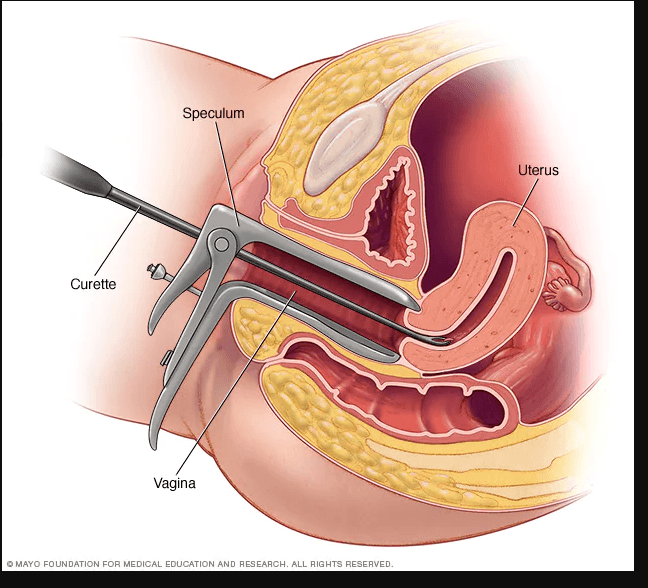
Most Methods of Abortion and Effects of Abortion for Women’s;-Being pregnant is a huge life decision. You’re about to embark on a journey that will change your entire world, for better or worse. And when you make the choice to have an abortion—no matter what the method—you are taking a monumental step.
It’s important to be aware of all the options available to you and to understand the effects of each one on both you and your unborn child. In this blog post, we will explore seven different methods of abortion and their effects on women’s health. We hope this information will help you make an informed decision about which abortion method is best for you and your loved ones.
Most Methods of Abortion and Effects of Abortion for Women’s
Abortion Facts
There are a number of methods of abortion, and the effects of each vary depending on the procedure. Below is a list of the most common methods and their effects:
1. Dilation and Curettage (D&C): This is the most common method used in abortions, and it involves using a sharp object to break the amniotic sac and then scraping out the fetus. This method has been shown to have minimal side effects for women, but can lead to infection if performed incorrectly.Top 7 Most Methods of Abortion and Effects of Abortion for Womens

2. Chemical Abortion: This involves taking a pill that causes abortion by causing contractions in the uterus. Side effects can include cramping, nausea, vomiting, diarrhea, and headaches.
3. Mifepristone/Misoprostol: This combination drug is used in early-stage abortions to end pregnancy without using surgery or drugs that could cause side effects. The mifepristone blocks progesterone receptors in the uterus while misoprostol helps expel the fetus after it starts to develop movement. There are no serious side effects associated with this method, but some women experience mild cramps or uterine pain afterwards.
4. Surgery: Abortions can be done through surgery if desired by the woman or doctor; however, this tends to be more expensive and require longer recovery time compared to other methods. Surgery can involve removing the fetus from the womb through various methods such as vacuum extraction, dilation and evacuation (D&E),Most Methods of Abortion and Effects of Abortion for Women’s
Read;10 Healthy Foods That Can Help You To Gain Weight
Types of Abortions
Abortion is the termination of a pregnancy before viability. There are three main types of abortion: surgical, chemical, and medical.
Surgical abortions involve terminating the pregnancy through surgery. They are the most common type of abortion, and they are usually safe and effective. Surgical abortions take between 15 and 20 minutes to complete, and the average cost is around $500.
Chemical abortions involve using a medication to terminate the pregnancy. This is the second most common type of abortion, and it’s often more effective than surgical abortions. Chemical abortions can be done in two ways: with pill pills or with injections. The pill pill method involves taking a set number of pills over time, while the injection method involves getting a shot into your uterus that will terminate the pregnancy. The average cost for a chemical abortion is around $200-$250.

Medical abortions involve ending a pregnancy by using an medications prescribed by a doctor. Medical abortions are usually safer than chemical abortions but less effective than surgical abortions. Medical abortions can be done in two ways: with pills or with injections. The pills method involves taking a set number of pills over time, while the injection method involves getting a shot into your uterus that will terminate the pregnancy. The average cost for medical abortion is around $300-$350.,Most Methods of Abortion and Effects of Abortion for Women’s
The Abortion Process
There are a variety of abortion methods available to women, each with its own set of potential side effects. The most common method is the surgical abortion, which can involve using tools such as forceps or a vacuum cleaner to remove the fetus from the womb. Surgical abortions can be very effective and cause minimal side effects, but they can also be difficult and require a skilled professional to perform them.
Other options for abortion include medication abortion (also known as mifepristone or RU-486) and induced labor. Medication abortions use a pill taken within days of conception to terminate the pregnancy. Induced labor occurs when a woman is induced into labor prematurely; this can be done through various medications or by having her uterus stimulated with electric shocks. Induced labor is more likely to result in complications than surgical abortion, but it is also less involved and typically less expensive.,Most Methods of Abortion and Effects of Abortion for Women’s

Overall, there are several different options available for women seeking an abortion, each with its own set of benefits and drawbacks. Any one option should only be used if it is the best fit for the individual woman based on her personal circumstances and health history.
After the Abortion: Recovery and Emotional Effects
1. Abortion is a traumatic experience for both the woman who undergoes it and for her partner or family members who witness the procedure. Recovery from abortion can be difficult, but is possible with support from friends and loved ones.
2. Many women experience physical and emotional side effects following abortion. These symptoms can vary from woman to woman, but may include cramping, bleeding, nausea, vomiting, diarrhea, headaches, dizziness, insomnia and fever. Some women may also experience Flashbacks (a sudden recall of traumatic memories associated with the abortion), anxiety or depression.,Most Methods of Abortion and Effects of Abortion for Women’s
3. Talking about your experiences following an abortion is essential in helping to manage these side effects. Seeking professional help if needed can also be very helpful in managing symptoms.
Breastfeeding After an Abortion
Breastfeeding after an abortion is possible and can be safe, provided you follow a few precautions. Some women wait as long as two weeks before breastfeeding to avoid disrupting the healing process. You can begin breastfeeding within 24 hours of your abortion, but it is best to wait a few days so that the healing process is complete. If you are having an abortion at home, however, there are several ways to make sure that you are breastfeeding safely and successfully.
If you are using medication to terminate your pregnancy, it is important to make sure that you do not breastfeed while taking the medication. Any medications used during early pregnancy can pass into your milk and could harm your baby. If you are unsure about what type of medication was used, ask your doctor or pharmacist.,Most Methods of Abortion and Effects of Abortion for Women’s
If you have had an abortion at a medical facility, there are many helpful resources available for breastfeeding mothers. Most medical facilities have lactation consultants on staff who can help new mothers get started breastfeeding quickly and easily. Many hospitals also have programs in place for pumping breast milk and giving it to premature babies who need it.*
Remember: Breastfeeding after an abortion is possible and safe provided you take a few precautions
Adoption after an Abortion
When a woman has an abortion, the procedure can be done in a variety of ways. The most common methods are induced labor, surgery, and medication. The effects of abortion on women vary depending on the method used.
Induced labor is the most common way to have an abortion. This involves using drugs or electrical stimulation to make the woman’s body go into labor prematurely. The risks associated with induced labor include maternal death, extensive bleeding, and infection.
Surgery is another common method of abortion. This involves removing the baby from the womb through either a vaginal or abdominal route. The risks associated with surgery include serious complications such as infection, nerve damage, and major blood loss.,Most Methods of Abortion and Effects of Abortion for Women’s
Medication is also a common method of abortion. This involves taking pills or injections to terminate the pregnancy. The benefits of medication abortions include less pain than other methods and shorter hospital stays. However, there are also risks associated with medication abortions, such as miscarriage and allergic reactions.
Conclusion
Abortion is a topic that can be emotionally charged for many people. Whether you are in favor of abortion or against it, understanding all the different methods and their effects on women’s health is key to making an informed decision. This article provides an overview of seven of the most common abortion methods and their effects on women’s health. Armed with this information, you can make more informed choices when it comes to terminating your pregnancy.
Be the first to comment